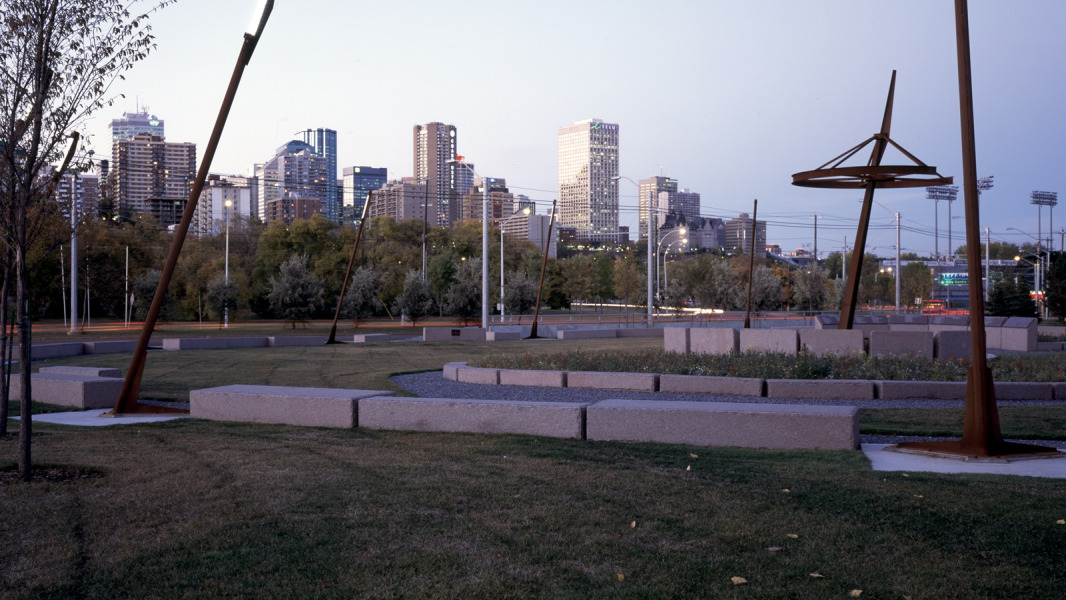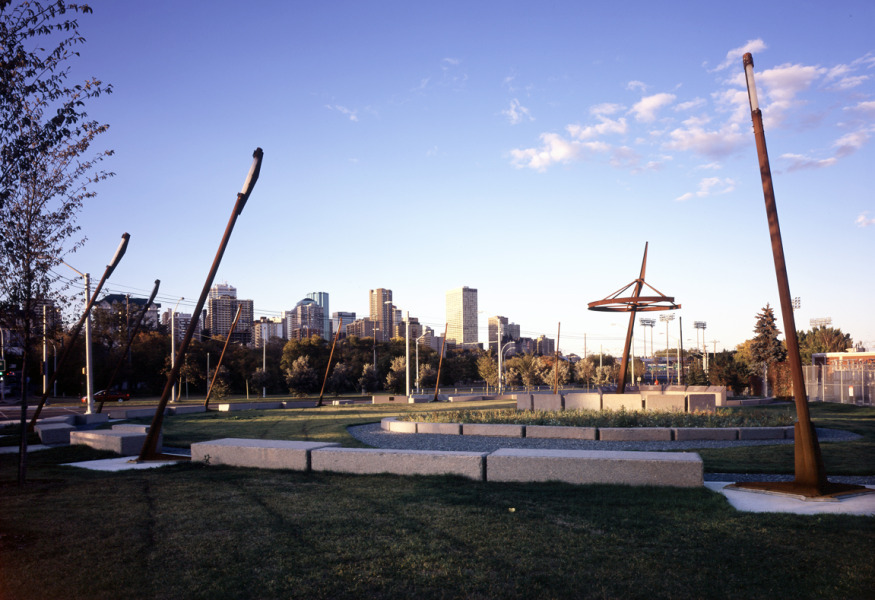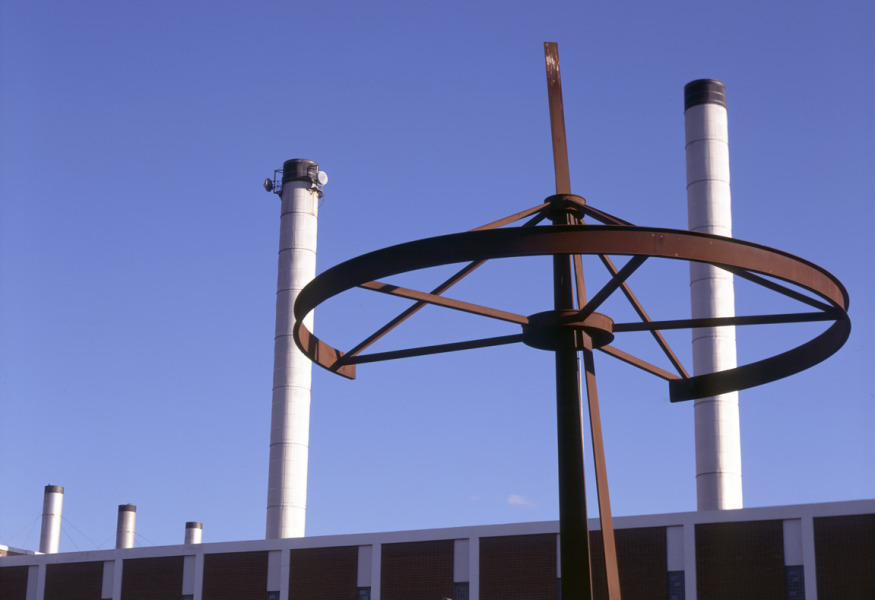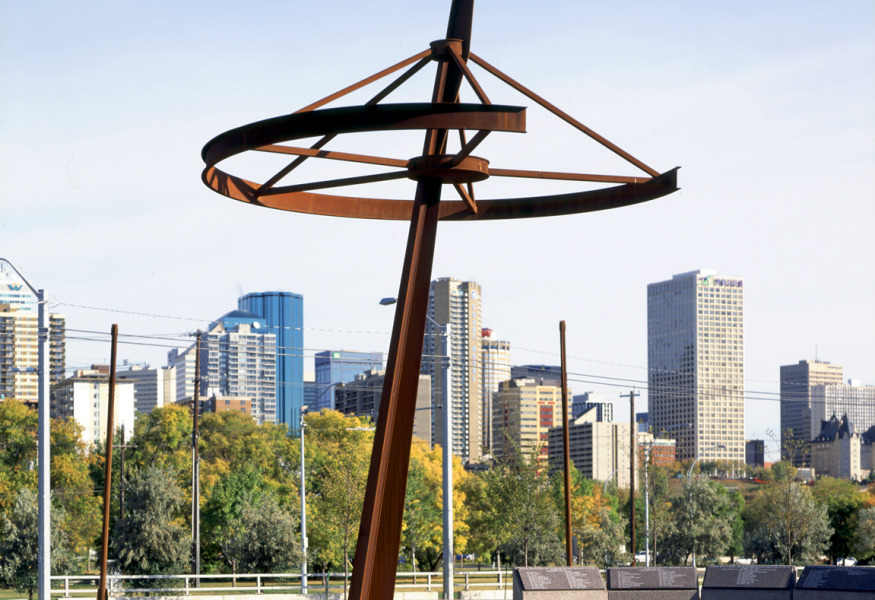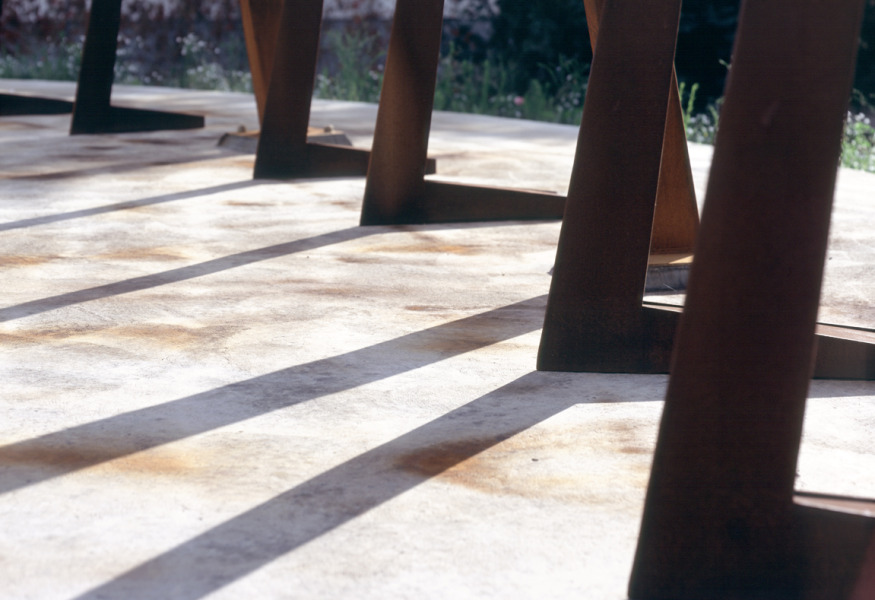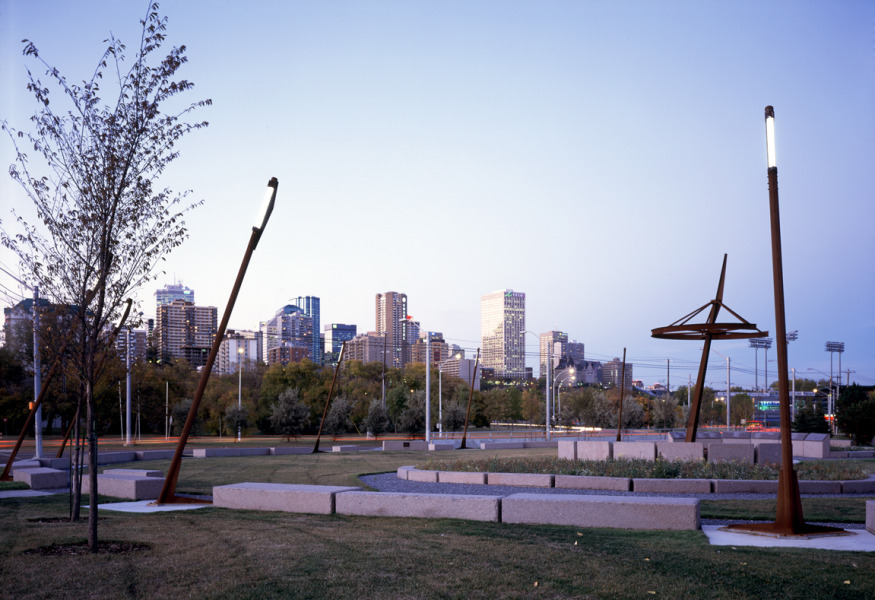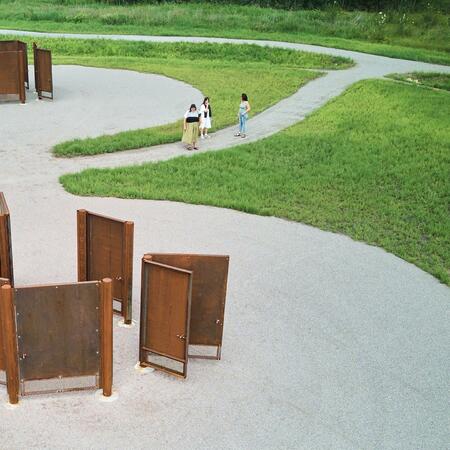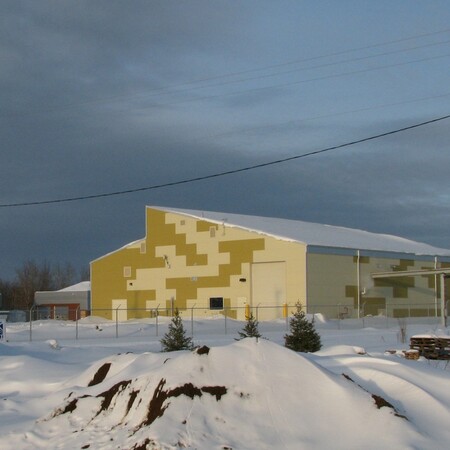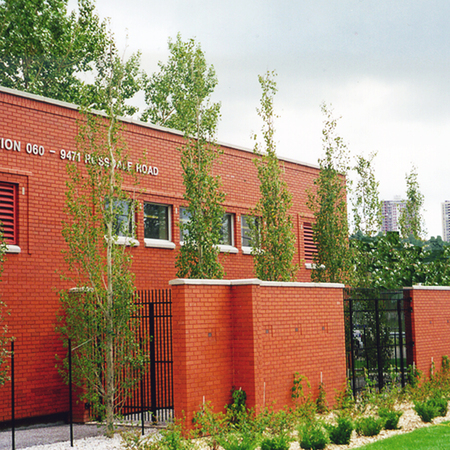Project Sectors
HISTORY
The Rossdale area is one of the richest historical sites in Alberta with intimate ties to the First Nations, Metis, and Indigenous peoples of the province. Indigenous groups have long known this former trading post to be an aboriginal burial ground, though, until recently, there were no protections in place to preserve or give recognition to the site. For many years, EPCOR, one of Edmonton’s local utilities providers, had been operating in the area, and in 2000, the site became a hard-hitting, significant point of contention when archaeologists recovered human remains, and the fight to acknowledge and protect the site was taken to city hall.
VISION
The Rossdale Traditional Burial Grounds Memorial acknowledges, respects, and empowers the area’s First Nations and Indigenous groups whose ancestors are buried in the Rossdale area. The process of realizing the Memorial was a long and challenging one, with the project’s many stakeholders—which included the City of Edmonton, EPCOR, and descendants, stakeholders and community volunteers—attempting to make their voices heard on an emotionally-charged and difficult project. The first six months of the project were spent building relationships and trust with Indigenous communities. Ultimately, our team was able to present a design solution that satisfied the regulations and requirements stipulated by the myriad interest parties and stakeholders involved. The final product incorporates design elements that reflect the values and the cultural heritage of the individuals who are buried at the site.
COMMEMORATIVE SYMBOLISM
Every detail of the design was thoroughly considered and vetted. Commemorative symbols are incorporated in the monument and throughout the site. The beams that form the uneven and tipi-reminiscent design form are corten steel and were chosen specifically for their reddish colour that, once weathered, will mark and stain the concrete pads at their base. The staining is symbolic of the blood and tears that have been spilled on the site and throughout the long, turbulent history of the province’s aboriginal people and the successors who fought to make the site sacred again.
The Memory Circle, the central element of the memorial, encapsulates in its area the original traditional aboriginal burial ground and Fort Edmonton cemetery. The circle of granite plinths is "broken", acknowledging that there are still burial sites and sacred ground beyond the current site and that the work is not yet complete. The circle opens to the four cardinal directions and designates a common ground, referencing the medicine wheel, healing and symbology of many First Nations and indigenous communities. The “light spears” that surround the circle reference the ‘marking’ of the territory by the Blackfoot people.
Within the circle the Infinity walk references the Métis people. It is a path that ties together the wild flower gardens within the Memory Circle.
The Memory Wall within the Memory Circle lists the names of First Nations, French Canadian, English, Métis and Scottish ancestors who are believed to have been buried on the site and the immediate surrounding area.
The Interpretive Belvedere is located along the multi-use trail with a view of the river and the memorial site. It is a quiet, contemplative area, designed to be a natural gathering space or place to rest. Interpretive panels under a protective canopy provide a description of the history and significance of the site.

